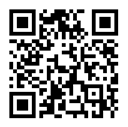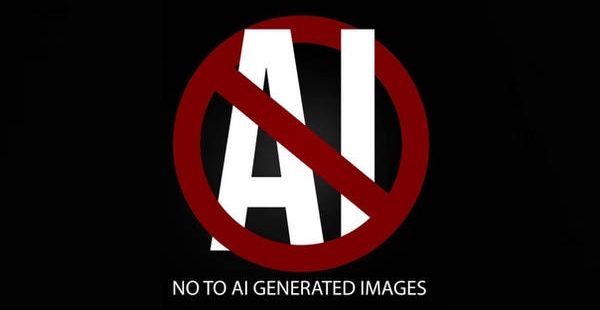In a world… where Chuck E. Cheese tokens are legal tender
typed for your pleasure on 9 April 2016, at 1.42 amSdtrk: ‘Date night’ by Will Yates
My satisfactory job excels in many ways — I often will tell anyone within earshot that it’s the best job I’ve ever had. The only downsides are that
1) the drive to and from work is lengthy (roughly 25min there and about an hour back, under normal circumstances), and
2) it doesn’t involve me closely inspecting Synthetik girlfeet for eight hours a day. But then, if we had everything we wanted, we’d be spoiled. I say that a lot, too.
However, to take my mind off the first issue, I’ve begun revisiting the distracting wonder that is the podcast. I’m not going to list my favourites here, as I intend on covering that in a future post, but I’m more than halfway through a series entitled ‘Germany: Memories of a nation‘, available from BBC Radio 4. Over the course of thirty episodes, host Neil MacGregor discusses various points concerning Deutschland’s geographical and social history, which is actually more fascinating than it sounds. True, some episodes are a bit boring (‘The Battle for Charlemagne’, for example), but others are really fascinating, like the one detailing the Bauhaus school of design, which I’ve always been intrigued with, and the one focussing on Notgeld. Now I want to buy some godforsaken Notgeld, cos obviously I need more ephemera in my life and to add to my rapidly-filling flat.
‘What’s Notgeld?? What the hell is it??’ you shriek, eyes wide, mouth frothing at the corners. Ah, I can sense that you are intrigued! First, a high-speed primer as to the situations which caused Notgeld to come into existence.
During World War I, Germany’s economy was sliding rapidly down the toilet, as the cost of the war effort was bringing about inflation. It kicked into high gear in 1922, where things were so bad that the Deutsche Mark would lose value over the course of a week. You’d have people getting their paycheques, and immediately racing to the shops to spend them before they were near-worthless. When this happened, which was often, the banks would issue new notes of higher value. Eventually it got so that the more notes there were in circulation, the less they were worth — which is where you get those anecdotes in history books of citizens literally bringing in wheelbarrows filled with Marks into shops, just to purchase groceries — and at any rate, the banks couldn’t afford to keep printing them.
The solution, then, was Notgeld, which is German for ‘necessity money’. It was defined as the currency that institutions would issue during economic or political crises, mainly when the national bank was out of regular money. These were issued not only by the national banks, but also by the banking institutions of various towns and municipalities. Of course, since metal was in short supply due to there being some sort of ‘world’ ‘war’ taking place, a lot of the denominations were printed on paper. Even then, issuers would get fancy, due to lack of overall materials, and would design notes made from silk, or leather, or postage stamps, or porcelain, or my favourite, compressed coaldust.
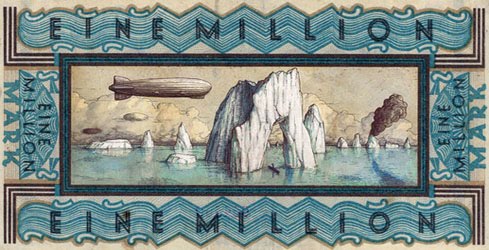
Zeppelins and icebergs, always awesome
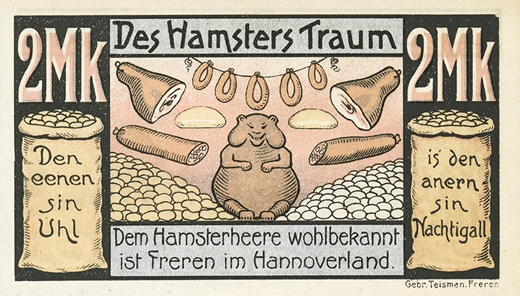
‘The Hamster’s Dream’. Anything with a hamster on it is automatically great. Although he looks a bit sinister
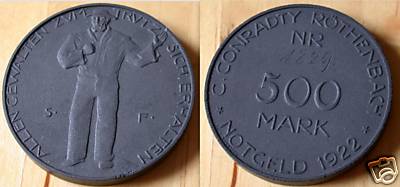
This is one of the coal coins. I can’t imagine them doing a person’s pockets any favours. Because of the dust, not because you have money, you see. Quit your bitching, at least you have money. And stop licking your fingers
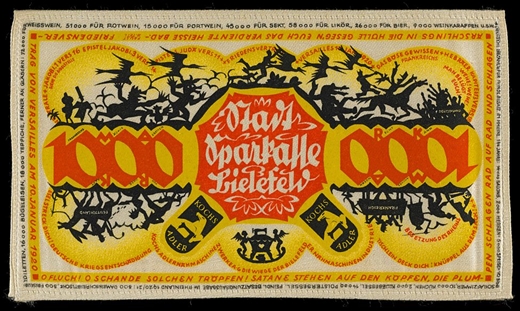
A Notgeld made of linen. Like a tea towel, that… you can use… to buy actual tea towels with
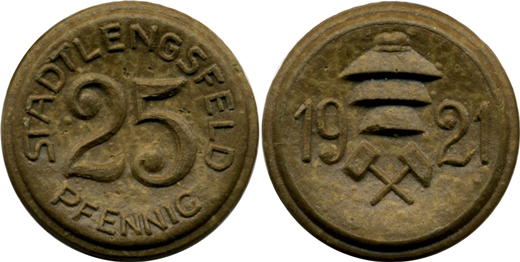
Porcelain coinage
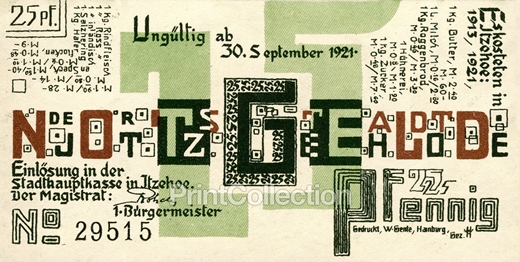
This one, designed by Wenzel Hablik, really speaks to me. Not only does it have a very cool, Ray-Gun-magazine-filtered-through-Bauhaus look to it, it’s a document of the economic situation that created it. Part of the text lists how much average things were in Itzehoe, the town it was issued in, in 1921
Vertical Text in top right corner: “It costs in Itzeohe in 1913 / 1921 1 Kilo Butter: 2.40 Marks/60 Marks 1 Liter Milk: 16 Pfennigs/2.80 Marks 1 Kilo rye bread: 46 Pfennings/3.30 Marks 1 egg: 8 Pfennigs/1.90 Marks 1 Kilo sugar: 48 Pfennigs/ 7.60 Marks”
Text in top left corner: “1 Kilo beef: 1.90 Marks/28 Marks 1 Kilo horsemeat: 80 Pfennigs/14 Marks 1 Kilo domestic bacon: 1.5 Marks/40 Marks 1 Herring: 6 Pfennigs/1.40 Marks 1 Kilo oatmeal: 48 Pfennigs/9 Marks”
Not only were they in demand cos they were, y’know, legal tender, but the uniqueness of the designs encouraged interest and use. Many towns depicted scenes on the notes or coins related to their history, or associated with their industry.
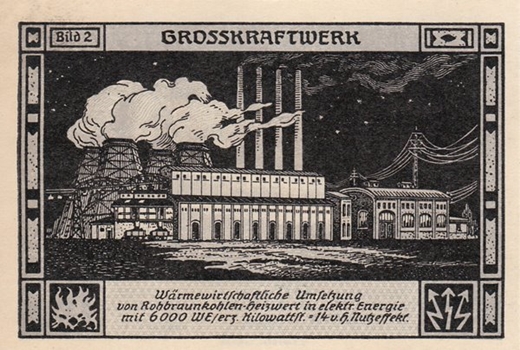
Such as this one from Bitterfeld, showcasing a power plant…
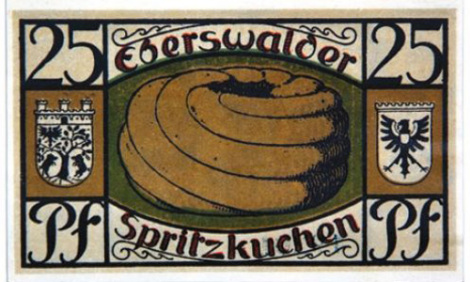
…or this one from the town of Eberswalde, known for its delicious all-pastry tyres.
Admittedly, my super-rudimentary knowledge of German had me initially thinking Notgeld meant ‘Not money’, but unsurprisingly, I was wrong.
You’ll be pleased to know that if you really want to own examples of Notgeld, eBay has a shedload of reasonably-priced ones on offer. I mean, I’m doing my damnedest not to buy this set, as its German Expressionist design speaks to me. I’ll note that the paper ones are easiest/cheapest to find — if you’re going to aim for hardcore status and attempt to purchase some of those compressed coal ones, you’ll find that examples of those are quite rare, as a good number of those were used as fuel. Still, there are worse hobbies! You can’t make your own Notgeld to buy the vintage Notgeld with, however; it doesn’t work like that
Random similar posts, for more timewasting:
Links kilns slink links (you can't get a lot of anagrams out of a five-letter word) on October 11th, 2010
Fusing Materialism with Esoterica on September 4th, 2007










